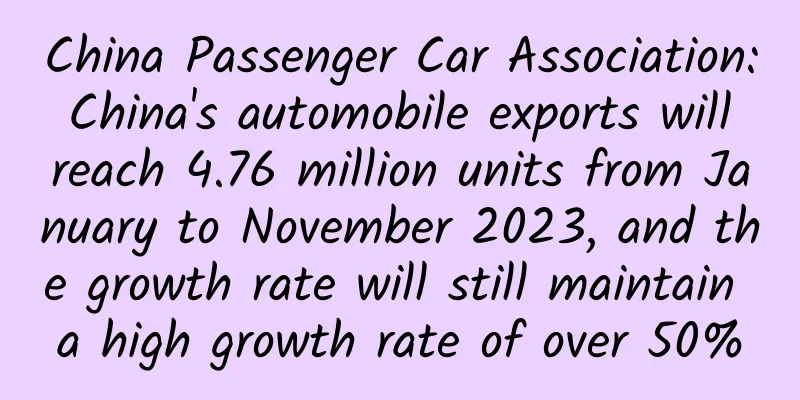How to refuel to get more power? There is a science to refueling!

|
There are many types of private cars, with prices ranging from tens of thousands to hundreds of thousands or even millions. However, there are only a few types of fuel to drive cars: 92, 95 and 98. In the eyes of many experienced drivers, 98 fuel is just a synonym for "expensive", and some even suspect that the so-called high-end fuel is just an IQ tax, which is actually a deep misunderstanding. Do you know why gasoline has different numbers? Is there a difference in gasoline at different gas stations? What is the difference between F1 car fuel and ordinary fuel? Today I will reveal to you the mystery of gasoline. To explain everything about fuel, we have to start with the heart of the car - the engine. My family car and F1 car, The power comes from the same "heart" In fact, although the displacement is the same, the power source of the engine does not rely solely on this parameter. The engine mainly repeats the process of oil-gas mixing, compression, and ignition, which is mainly connected in series by the rotation of the crankshaft. If you want to increase the power, you need to let the engine do more work per unit time. In short, there are several ideas. Traditional automobile engine principle The most direct way is to make the crankshaft rotate faster, such as shortening the length of the crankshaft as much as possible, which is called "short stroke engine" in jargon. This will shorten the crankshaft stroke, reduce the burden at high speeds, and allow the speed to be very high. In the past, the 2.4L naturally aspirated engine could reach 20,000 rpm, but today, in order to prevent racing from simply "stacking parameters", the speed of F1's 1.6T power unit is limited to 15,000 rpm. At the same time, the compression ratio also determines the powerful power of the engine. The compression ratio refers to the ratio of the compressed volume of the oil-gas mixture to its original volume before combustion in the engine. Just like the heart beats differently when moving and when still, different compression ratios correspond to different power output requirements. Today, the engine compression ratio of family cars is generally between 9:1 and 11:1, while the compression ratio of F1 power units can reach 16. The combustion chamber of an engine with a high compression ratio will be narrower, and the pressure and temperature of the mixed gas in the cylinder will increase, increasing combustion efficiency and bringing stronger power output. Figure | References [1] Compression ratio of one man’s honey and another’s poison However, the compression ratio cannot be increased just because you want to. There are many factors that affect it. For example, a higher compression ratio operating condition can potentially increase engine instability. Normally, when the engine piston reaches a certain critical point, the spark plug begins to ignite and ignite the high-pressure mixed gas. But some "dishonest" oil and gas may cause trouble at this time. As the pressure rises, the temperature will continue to rise. When the mixed gas encounters its "true" temperature in advance, it will begin to lose control and burn violently and abnormally. This will have a very important impact on the engine-there is an upward force in the compression process that pushes the piston to move to the upward dead center. If a deflagration occurs at this time, a downward force will be generated to add to the chaos. Both forces act on the piston, which will inevitably cause damage to the piston rod, valve, cylinder wall, crankshaft and other components. This situation is generally accompanied by sharp noise and unstable speed, which is what veteran drivers often call "knock" or "cylinder pulling." For this question, does it mean that I can no longer buy a car with a high compression ratio? Is my dream of racing over? Don't panic, in fact, engineers have already found a solution, one of which is to start with gasoline. Whether you are an experienced driver or not, you probably know that there are various grades of gasoline on the market today. They are like special soothing agents for engines to deal with potential "knock" phenomena. A high grade does not mean higher cleanliness or quality. The grade represents different octane numbers. The higher the grade, the higher the octane number, which means that the gasoline has stronger anti-knock performance and is more suitable for engines with high compression ratios. So how does this value come from? Simply put, it is a value obtained by comparing actual gasoline with an artificially mixed standard fuel. The standard fuel has two components: one is isooctane, which has very good anti-knock properties, and the other is n-heptane, which has very poor anti-knock properties. The value of isooctane is set to 100, and the value of n-heptane is set to 0. Through experiments, the ratio of the two mixtures of standard gasoline is adjusted to achieve the same anti-knock properties as actual gasoline. This ratio is what we call the octane number. For example, the octane number of the 93-grade gasoline we commonly use is 93, which means that it has the same anti-knock properties as the standard gasoline containing 93% isooctane and 7% n-heptane. [2] Oil is mined all over the world and eventually made into gasoline of several fixed grades based on different engine standards. So, are different grades of fuel and different car models like lock cylinders and keys, will there be problems if they are mixed? Indeed, it is difficult for automobile engines and fuel to achieve "downward compatibility". That is to say, if gasoline with a lower grade than the required grade is added, the engine will not be able to suppress knocking when the engine is running at high speed and high load, and the carbon deposits in the engine will increase, causing a series of indirect damages, such as increased fuel consumption and increased wear. In the "Calibration of Changes in Octane Number of Automobile Fuel", there is a case showing that the manufacturer's calibration recommends the use of 97-grade gasoline, but a driving test was carried out by filling the car with 92-grade gasoline. It was found that under the influence of knock, the maximum power and torque both decreased, and the engine that "ate the wrong fuel" worked very unsteadily and emissions deteriorated seriously. Figure | References [3] What if my car is a "social bull syndrome" and I actively "upgrade"? The reason is very simple. When a car that uses 95-grade gasoline is upgraded to 98-grade gasoline, it can experience more stable anti-knock ability, as well as quieter and stronger power output. In early 2019, the U.S. Environmental Protection Agency conducted a test using two types of fuel, premium and regular, and found that when using premium fuel, the efficiency in high-speed, high-torque, and high-load areas is higher than that of regular fuel, which means less tendency to knock. [4] It seems that, whether it is a horizontal choice within the same level or an upward upgrade, refueling is really a compulsory course that requires in-depth study. Feed early and enjoy early. The fuel that takes care of the engine is really fragrant Although each car owner drives a different car, they all have the same wish, which is to maximize power like an F1 car. It is known that under the condition of using the same number of liters of fuel, the Ferrari team can speed up by more than half a second per lap. Although it is only half a second, it has greatly increased the chances of winning the championship. A car engine is like a human stomach that often suffers from indigestion and can also have incomplete combustion. "Carbon deposits" are wax and gum that adhere to the intake valve and the wall of the combustion chamber due to incomplete combustion of some fuel. These deposits harden and thicken when heated, thus affecting the engine and the "digestion" function of the engine. Carbon deposits are like sponges and will absorb some of the fuel. Over time, the concentration of the mixture that actually enters the cylinder will become sparse, causing various problems such as difficulty in starting, unstable idling, weak acceleration, increased fuel consumption, and in severe cases, the engine may be damaged. With the development of the automobile industry, the engines of civilian and high-efficiency vehicles are becoming more and more similar to F1 engines. Therefore, high-end fuel has become a growing demand of the public, which can ensure our daily driving is safer, smoother and faster. References [1] Cui Yongsheng. (2017). Gasoline engine technology and suggestions for selecting high-grade gasoline. Petroleum depots and gas stations (2). [2] Chen Zhibin, & Zhang Yongliang. (2010). Calibration of changes in automobile fuel octane number. Light Vehicle Technology (10), 5. [3] Tian Shiyong. (2020). The relationship between octane number, compression ratio and gasoline grade. Petroleum Knowledge (5), 1. [4] Benchmarking Advanced Low Emission Light-Duty Vehicle Technology, https://www.epa.gov/vehicle-and-fuel-emissions-testing/benchmarking-advanced-low-emission-light-duty-vehicle-technology |
Recommend
Why Apple is no longer cool under Cook (in-depth analysis)
In January 2020, Apple's market value increas...
Event Operation | How to organize an event with a high degree of completion?
How can an operator carry out an activity more sc...
Brand communication process and map!
What are the basic workflows for a successful bra...
Google expected to return to mainland China this fall
Reuters quoted technology blog Information as say...
Liu Yiwei's "21 Ways to Get Commissions" plans commission designs suitable for the company's stage of development
Liu Yiwei's "21 Ways to Get Commissions&...
Today I will teach you how to identify Canada goldenrod!
A while ago, we posted a short Weibo post to shar...
Animal experiments: the heroes behind human anti-epidemic efforts丨Things about microorganisms
Editor's note: Microorganisms are both our fr...
The hidden rules revealed! Analysis of cheating methods and anti-cheating methods in the mobile advertising industry
1. Click cheating Click fraud is a relatively low...
Internet + door-to-door service: How to play in this market with strong demand?
Penguin Intelligence | Research and Production Re...
How educational institutions increase followers and traffic through TikTok!
This article introduces the methods used by educa...
How to conceive a planning proposal in a clear and organized manner?
I have heard many of my friends and colleagues ta...
AppCan receives RMB 100 million in Series B funding and announces open source mobile engine
Recently, AppCan, the advocate and leader of hybr...
How difficult is it to prevent floods in the Yangtze River?
↑A group of National Geographic fans, focusing on...









